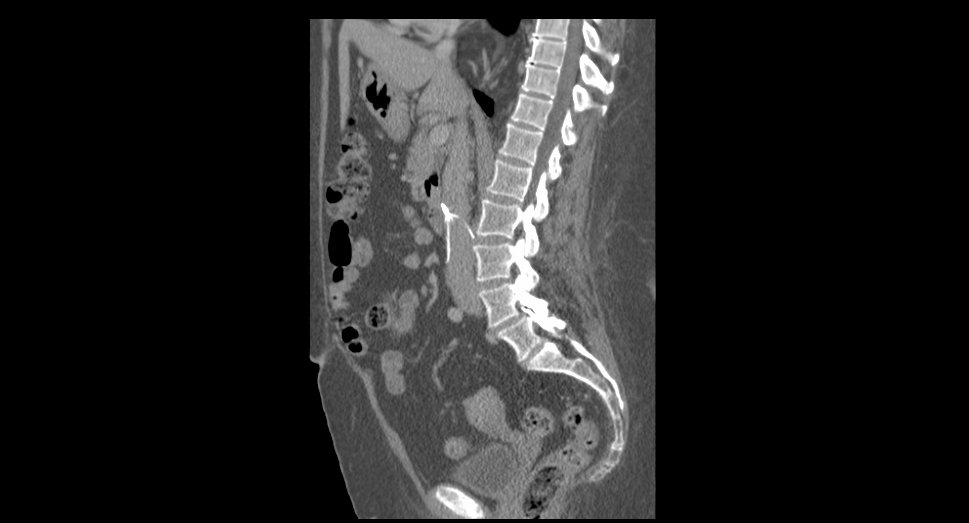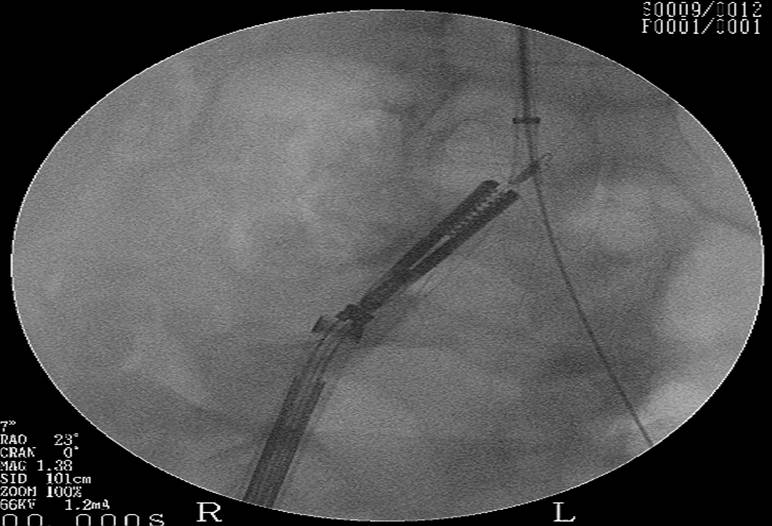Back to Annual Meeting Program
A New Tool for Extreme IVC Filter Removal
Christopher J Kwolek, Junaid Malek, Mark Conrad
Mass General Hospital, Boston, MA
Background:
As the use of retrievable filters increases, the need for widely adaptable techniques to remove embedded IVC filters will increase. The use of the rigid bronchoscopy forceps allows embedded filters to be removed safely in patients who would otherwise have a tilted filter left in place permanently. However the rigid straight shaft may prevent the operator from successfully directing the forceps and grasping the tip of the filter. We describe the first intravascular use of a steerable laparoscopic grasping forcep to remove an embedded IVC filter.
Method:
A 58 yo patient was referred 1 yr after undergoing catheter directed thrombolysis and placement of a retrievable IVC filter for treatment of DVT/PE. She had undergone an unsuccessful attempt at filter retrieval via an Internal Jugular (IJ) approach. CT scan revealed that the tip of the Bard Filter was embedded in the anterior wall of the IVC ( Fig 1) A second unsuccessful attempt at retrieving the filter via an isolated RIJ approach was performed using snares, retrieval cones and biopsy forceps. The patient was returned to the endovascular suite 1 month later for another attempt using a combined RIJ and Femoral venous approach. The Bard retrieval cone was introduced via a 12 fr sheath in the RIJ. A novel laparoscopic fenestrated alligator grasper with a steerable tip with 90 degrees deflection and 360 degrees rotation was introduced via an 18 fr sheath in femoral vein. The grasper was used to remove the tip of the filter from the IVC wall and redirect it into the lumen where it was captured using the retrieval cone. (Fig 2)
Results:
Completion IVC gram demonstrated no thrombus, or extravasation of contrast. Repeat CT scan at 6 weeks revealed a widely patent IVC with no thrombus.
Conclusion:
A steerable laparoscopic grabber may facilitate the retrieval of embedded/tipped IVC filters. It may also have use for the retrieval of other foreign bodies within the vascular system. 

Back to Annual Meeting Program
